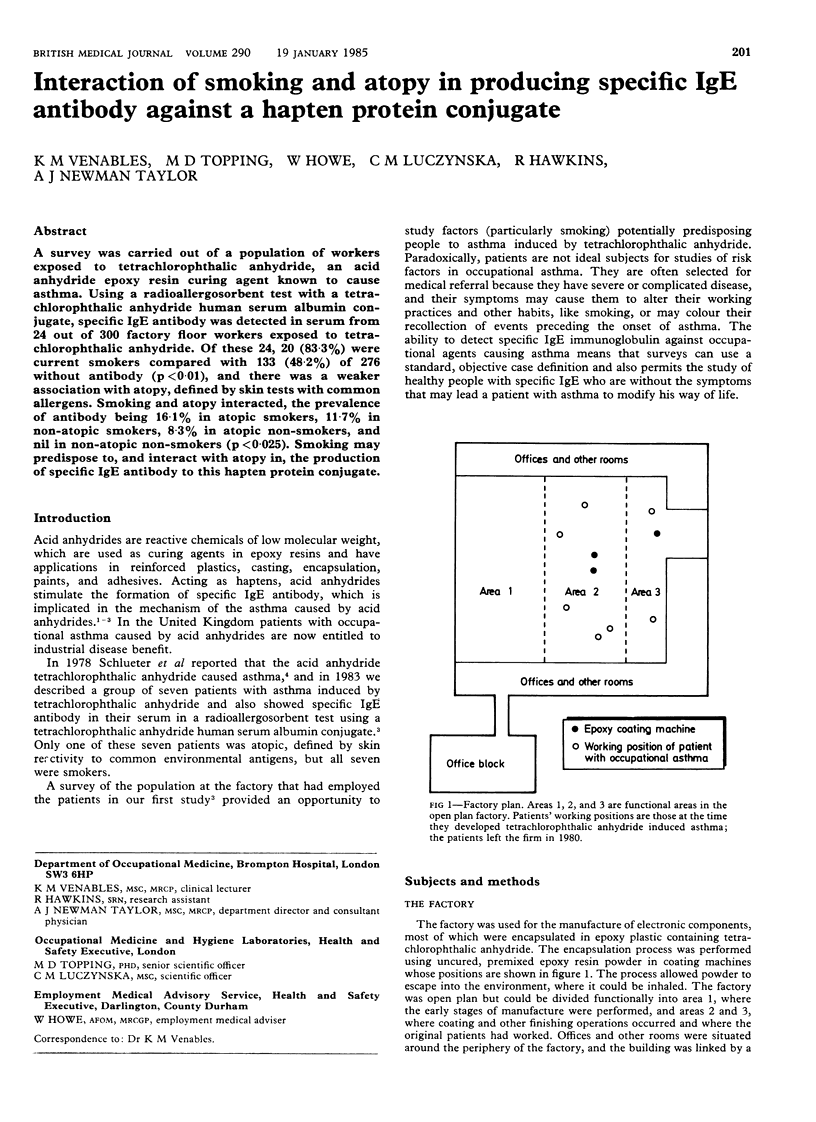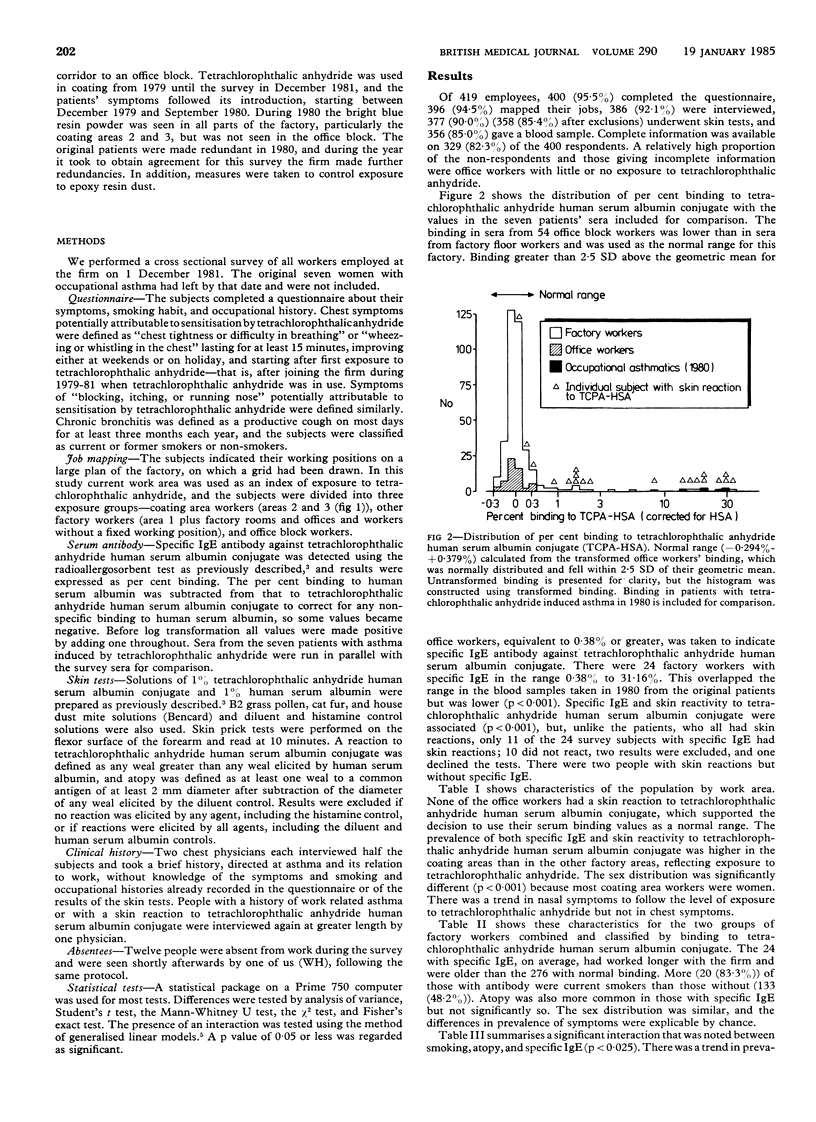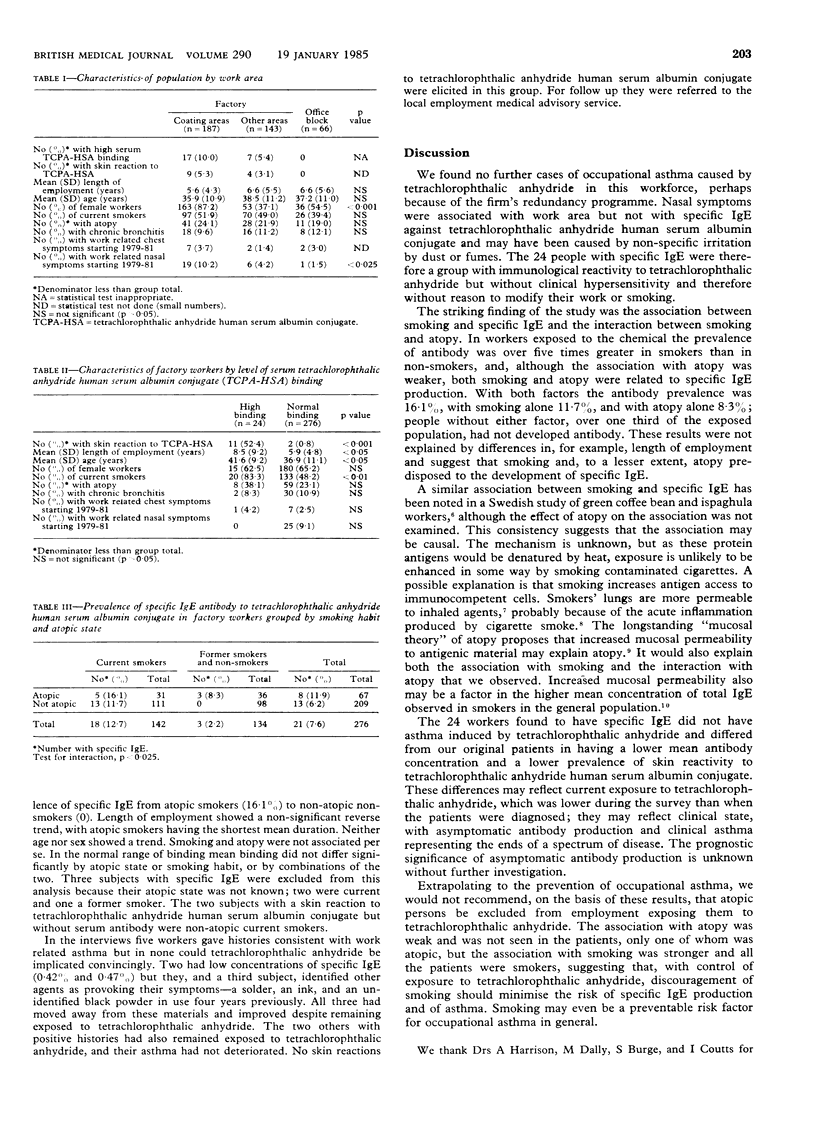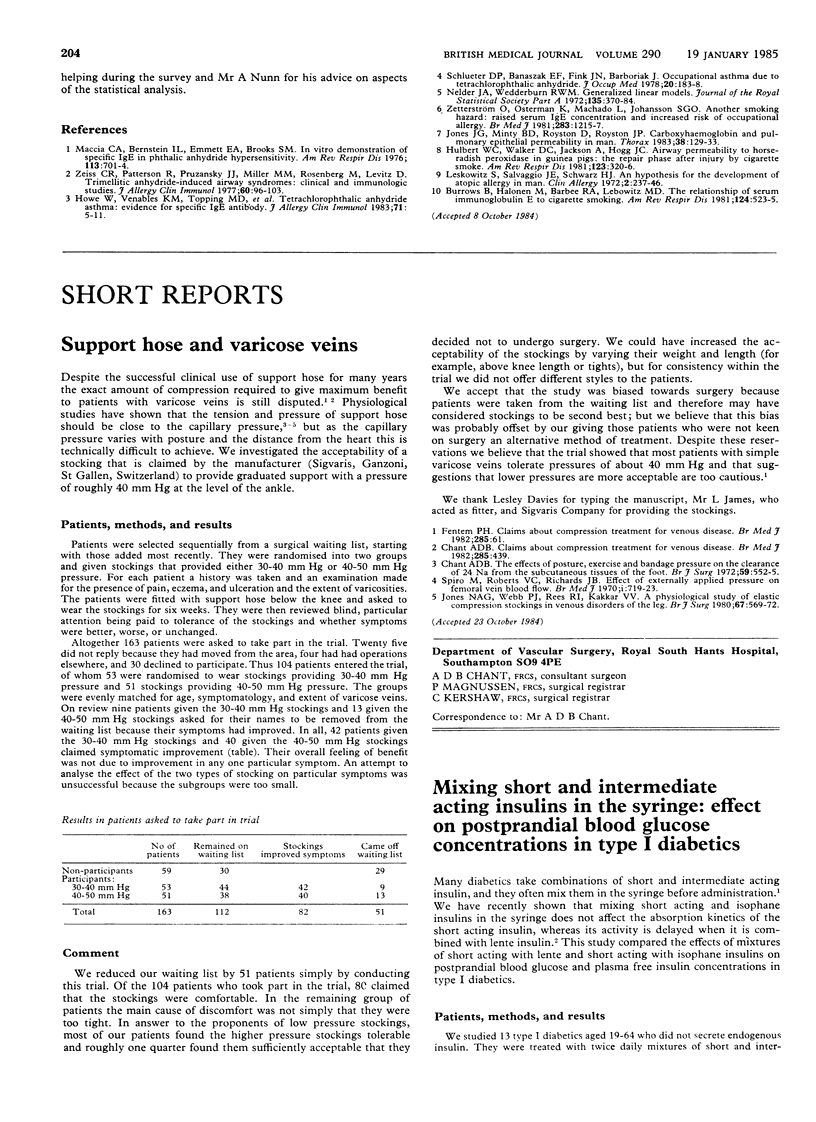Abstract
A survey was carried out of a population of workers exposed to tetrachlorophthalic anhydride, an acid anhydride epoxy resin curing agent known to cause asthma. Using a radioallergosorbent test with a tetrachlorophthalic anhydride human serum albumin conjugate, specific IgE antibody was detected in serum from 24 out of 300 factory floor workers exposed to tetrachlorophthalic anhydride. Of these 24, 20 (83.3%) were current smokers compared with 133 (48.2%) of 276 without antibody (p less than 0.01), and there was a weaker association with atopy, defined by skin tests with common allergens. Smoking and atopy interacted, the prevalence of antibody being 16.1% in atopic smokers, 11.7% in non-atopic smokers, 8.3% in atopic non-smokers, and nil in non-atopic non-smokers (p less than 0.025). Smoking may predispose to, and interact with atopy in, the production of specific IgE antibody to this hapten protein conjugate.
Full text
PDF



Selected References
These references are in PubMed. This may not be the complete list of references from this article.
- Burrows B., Halonen M., Barbee R. A., Lebowitz M. D. The relationship of serum immunoglobulin E to cigarette smoking. Am Rev Respir Dis. 1981 Nov;124(5):523–525. doi: 10.1164/arrd.1981.124.5.523. [DOI] [PubMed] [Google Scholar]
- Howe W., Venables K. M., Topping M. D., Dally M. B., Hawkins R., Law J. S., Taylor A. J. Tetrachlorophthalic anhydride asthma: evidence for specific IgE antibody. J Allergy Clin Immunol. 1983 Jan;71(1 Pt 1):5–11. doi: 10.1016/0091-6749(83)90539-0. [DOI] [PubMed] [Google Scholar]
- Hulbert W. C., Walker D. C., Jackson A., Hogg J. C. Airway permeability to horseradish peroxidase in guinea pigs: the repair phase after injury by cigarette smoke. Am Rev Respir Dis. 1981 Mar;123(3):320–326. doi: 10.1164/arrd.1981.123.3.320. [DOI] [PubMed] [Google Scholar]
- Jones J. G., Minty B. D., Royston D., Royston J. P. Carboxyhaemoglobin and pulmonary epithelial permeability in man. Thorax. 1983 Feb;38(2):129–133. doi: 10.1136/thx.38.2.129. [DOI] [PMC free article] [PubMed] [Google Scholar]
- Leskowitz S., Salvaggio J. E., Schwartz H. J. An hypothesis for the development of atopic allergy in man. Clin Allergy. 1972 Sep;2(3):237–246. doi: 10.1111/j.1365-2222.1972.tb01288.x. [DOI] [PubMed] [Google Scholar]
- Maccia C. A., Bernstein I. L., Emmett E. A., Brooks S. M. In vitro demonstration of specific IgE in phthalic anhydride hypersensitivity. Am Rev Respir Dis. 1976 May;113(5):701–704. doi: 10.1164/arrd.1976.113.5.701. [DOI] [PubMed] [Google Scholar]
- Schlueter D. P., Banaszak E. F., Fink J. N., Barboriak J. Occupational asthma due to tetrachlorophthalic anhydride. J Occup Med. 1978 Mar;20(3):183–188. doi: 10.1097/00043764-197803000-00006. [DOI] [PubMed] [Google Scholar]
- Zeiss C. R., Patterson R., Pruzansky J. J., Miller M. M., Rosenberg M., Levitz D. Trimellitic anhydride-induced airway syndromes: clinical and immunologic studies. J Allergy Clin Immunol. 1977 Aug;60(2):96–103. doi: 10.1016/0091-6749(77)90033-1. [DOI] [PubMed] [Google Scholar]
- Zetterström O., Osterman K., Machado L., Johansson S. G. Another smoking hazard: raised serum IgE concentration and increased risk of occupational allergy. Br Med J (Clin Res Ed) 1981 Nov 7;283(6301):1215–1217. doi: 10.1136/bmj.283.6301.1215. [DOI] [PMC free article] [PubMed] [Google Scholar]


